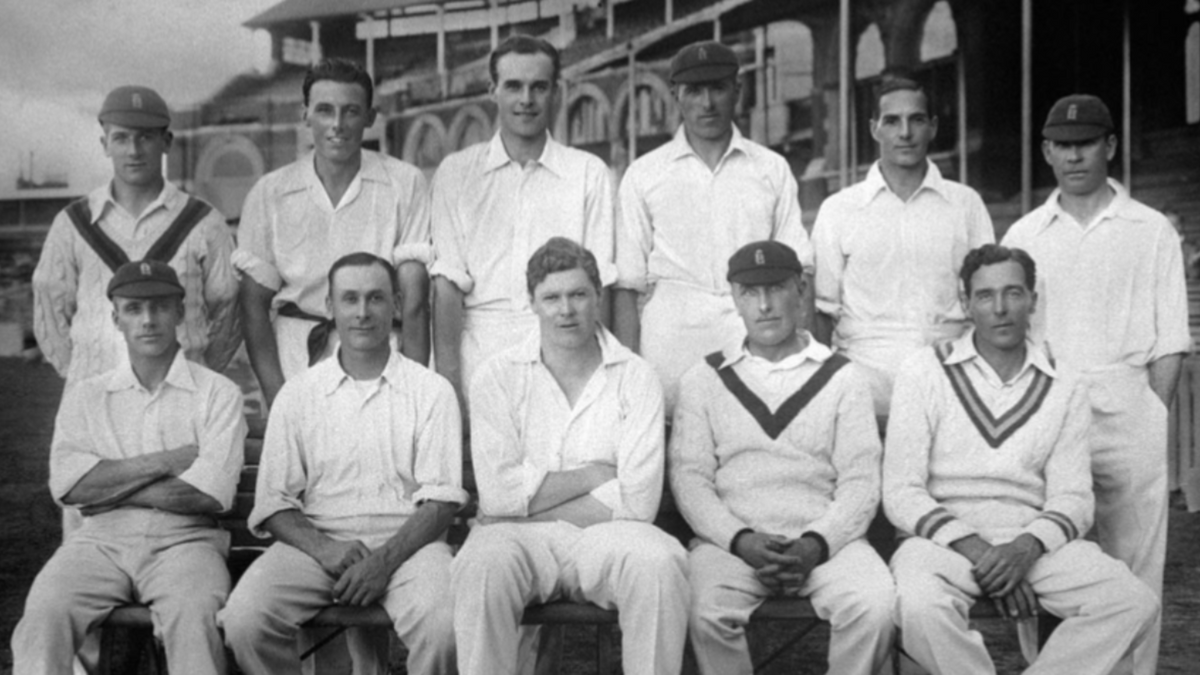
In the 2022 Wisden Cricketers’ Almanack, Lawrence Booth details the alignment of Wisden with the Association of Cricket Statisticians and Historians and the consequences it had on several legendary players’ first-class records.
In late September 1873, W. G. Grace helped knock off the runs against Kent at Gravesend’s Bat and Ball Ground. It was his last innings of the summer in a so-called “great or important match”. At 25, he was already a celebrity – his team’s name was “W. G. Grace’s XI” – and there would be more special treatment to come.
WG finished the season with 1,805 runs at 72 in great or important matches (the term “first-class” did not become established until about 1880). It was, in the language of the time, an uncommonly good haul. But it also presented a problem. Two seasons earlier, he had notched up 2,739 – an eye-watering 1,671 clear of the field – and attained stardom. It suited everyone in cricket, maybe even his opponents, to keep him there. And it might help if he topped 2,000 again. Would anyone object if those extra runs somehow materialised? The fixture list was so messy – and the County Championship still 17 years from a settled structure – that a spot of creative accountancy might slip through unnoticed.
And slip through it did, thanks to James Lillywhite’ s Cricketers’ Annual, which added six more innings from four more games: 47 and 26 for MCC against Hertfordshire at Chorleywood; 67 for MCC against Staffordshire at Lord’s; 152 and five for the Gentlemen to Canada Touring Team against MCC at Lord’s; and 37 not out for South v North at The Oval. WG’s aggregate was now 2,139. He had done it again (Better still, an extra 31 wickets lifted his haul to 106: doubly good.)
Until now – and with the exception of Wisden 1981 – those four games have been included in the Almanack’s tally of Grace’s first-class runs. But there have always been elephants in the dressing-room: Hertfordshire and Staffordshire have never been first- class counties; the MCC XI who took on the touring team to Canada were actually a XV, including so many weak players they felt the need to be bolstered by a professional, Arnold Rylott; and the game at The Oval was a one-innings affair, tagged on to the end of a match that had finished early. To make matters more dubious, WG was the only player in those four games whose runs were recorded as first- class. Not for the first time, it was one rule for W. G. Grace, another for everyone else.
In all, the Association of Cricket Statisticians and Historians – founded in 1973, partly to bring clarity to the sport’s rich and varied numerical past – believe Grace’s figures in the Almanack include ten matches unworthy of first- class status. So while Wisden has said 54,896 runs and 2,876 wickets, the ACS have gone with 54,211 and 2,809. Drops in the ocean, maybe, but enough to cause ripples.
In 1981, Wisden’s statistician, Michael Fordham, brought the Almanack’s records into line with the ACS; in 1982, Wisden’s editor, John Woodcock, explained this had been done “because Mr Fordham thought, mistakenly, that he had cleared them with me”, and changed the numbers back again. In a typically eloquent piece, Woodcock said he preferred “to leave the great man’s figures as they have been for as long as anyone cares to remember”. He added: “Then, as now, contemporary opinion was the best criterion.” Hence the impasse: Wisden in one corner, deferring to the WG exceptionalism of Victorian England; the ACS in the other, preferring rigour.
But Wisden has crossed the ring, and aligned with the ACS. It has always been faintly ludicrous that a player of Grace’s standing did not possess universally accepted figures, and the ACS have done more than anyone to determine which games should and should not be first-class. However wedded Wisden might have become to its own version, there remained a simple choice: massaged reputation or statistical coherence. The time has come to accept that the Almanack should be more concerned with record than romance.
This will not please everyone. Among WG’s lost 685 runs are two hundreds – that 152 at Lord’s, and 113 for Gloucestershire against Somerset at Clifton in 1879 (Somerset are regarded as first-class from 1882 to 1885, then from 1891). That means his haul of centuries falls to 124, though he remains 11th in the all-time list, between Graham Gooch (128) and Denis Compton (123); he also retains fifth place in the list of leading run-scorers. The effect on Grace the bowler is more pronounced: he slips from sixth to tenth, beneath Alex Kennedy, Derek Shackleton, Tony Lock and Fred Titmus.
Some may feel all this diminishes the occasion of, say, WG’s 100th hundred, celebrated at Bristol in 1895, when Somerset’s captain Sammy Woods had, in his own words, “the satisfaction of giving him a full pitch to get to his hundred, not that he wanted any help”. Grace went on to make 288. But history is full of tweaks, and most are more significant. Nor does it dilute WG’s essence: he was, and still is, a giant.
Alignment with the ACS brings other changes. Jack Hobbs gains two hundreds, taking him to 199, because the ACS give first-class status to matches played on a tour of India and Sri Lanka by the Maharaj Kumar of Vizianagram’s XI: either side of Christmas 1930, Hobbs made centuries in Colombo against Dr J. Rockwood’s Ceylon XI. (Hobbs, it must be said, disagreed, and felt those two innings shouldn’t count.) Herbert Sutcliffe was on the same tour, and scored two hundreds, taking him to 151, equal fifth on the all-time list, with Geoff Boycott.
The record of another Yorkshireman, Wilfred Rhodes, has a net gain of three matches. He adds two each in Bombay and Lahore in 1922-23, when he turned out three times for the Europeans and once, intriguingly, for the Hindus & Muslims against the Europeans & Parsees. And he loses one from a tour of South Africa in 1909-10. It’s perhaps a good thing he’s no longer around to learn that his bowling average has been adjusted from 16.71 to 16.72, and his batting average from 30.83 to 30.81.
One long-standing team record has changed. For years, Wisden decreed that the lowest total in first-class cricket was 12, an ignominy shared by Oxford University and Northamptonshire. Now, what was once a footnote to the table you can find on page 1262 gains importance. In 1810, at Lord’s Old Ground in Marylebone, The Bs were bowled out in their second innings by England for six. There were three scoring shots, including a four by John Wells, one of two players whose surname did not begin with the appropriate letter.
That game is one of over 300 to have taken place between 1772 and 1815 reckoned to be first-class by the ACS. The Almanack’s cut-off point had been 1815, “after the Napoleonic War”. We hope readers will agree Wisden hasn’t reinvented the wheel, but tightened a few nuts. With any luck, the whole thing will proceed more smoothly.








